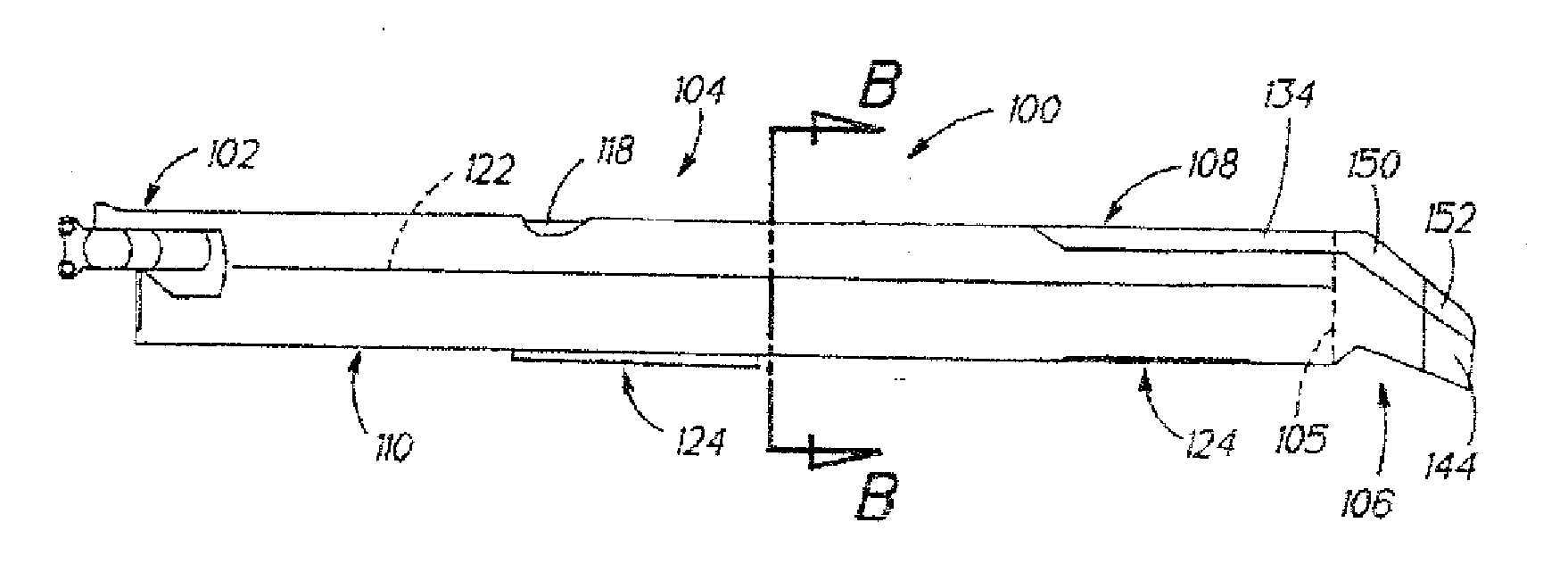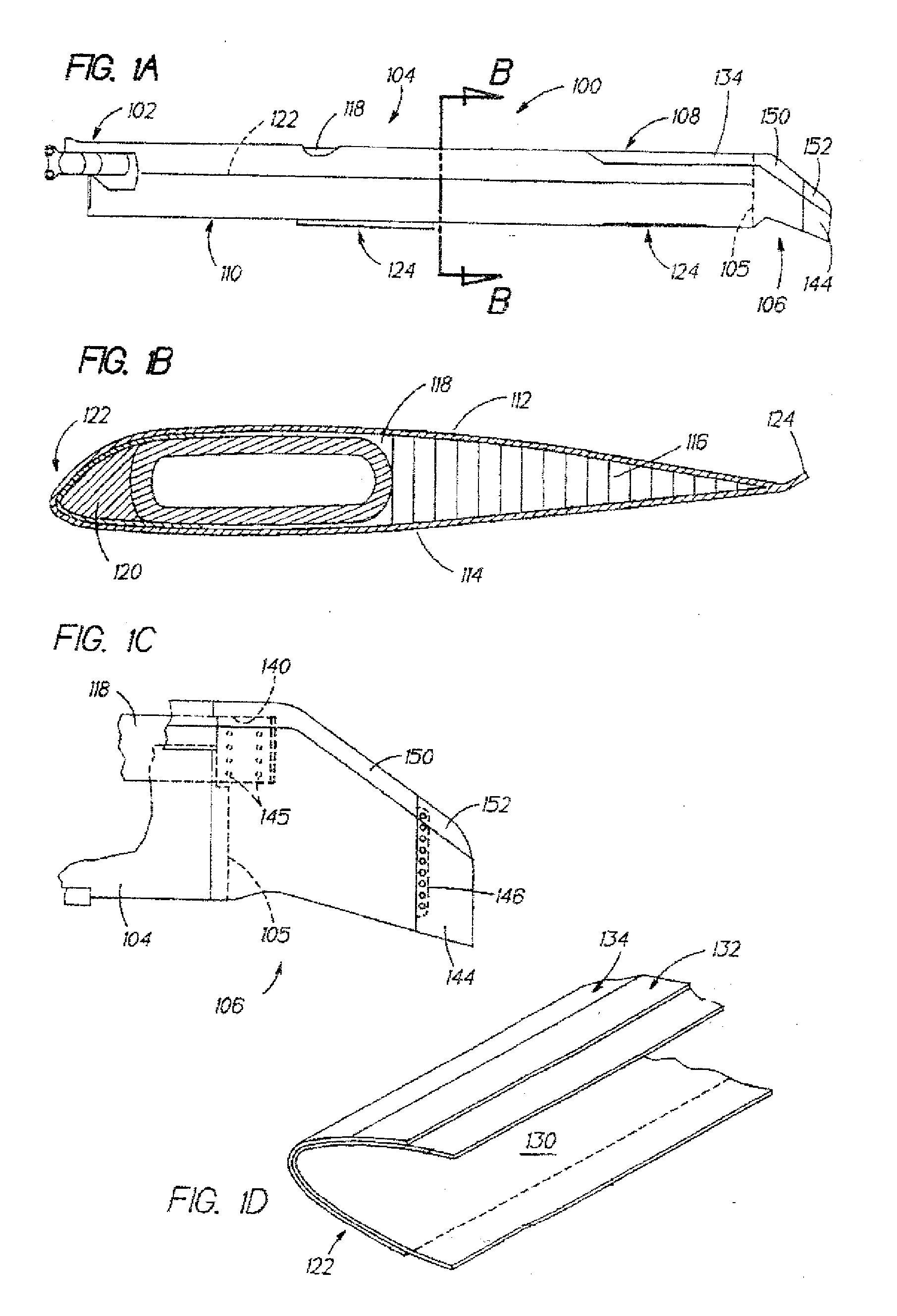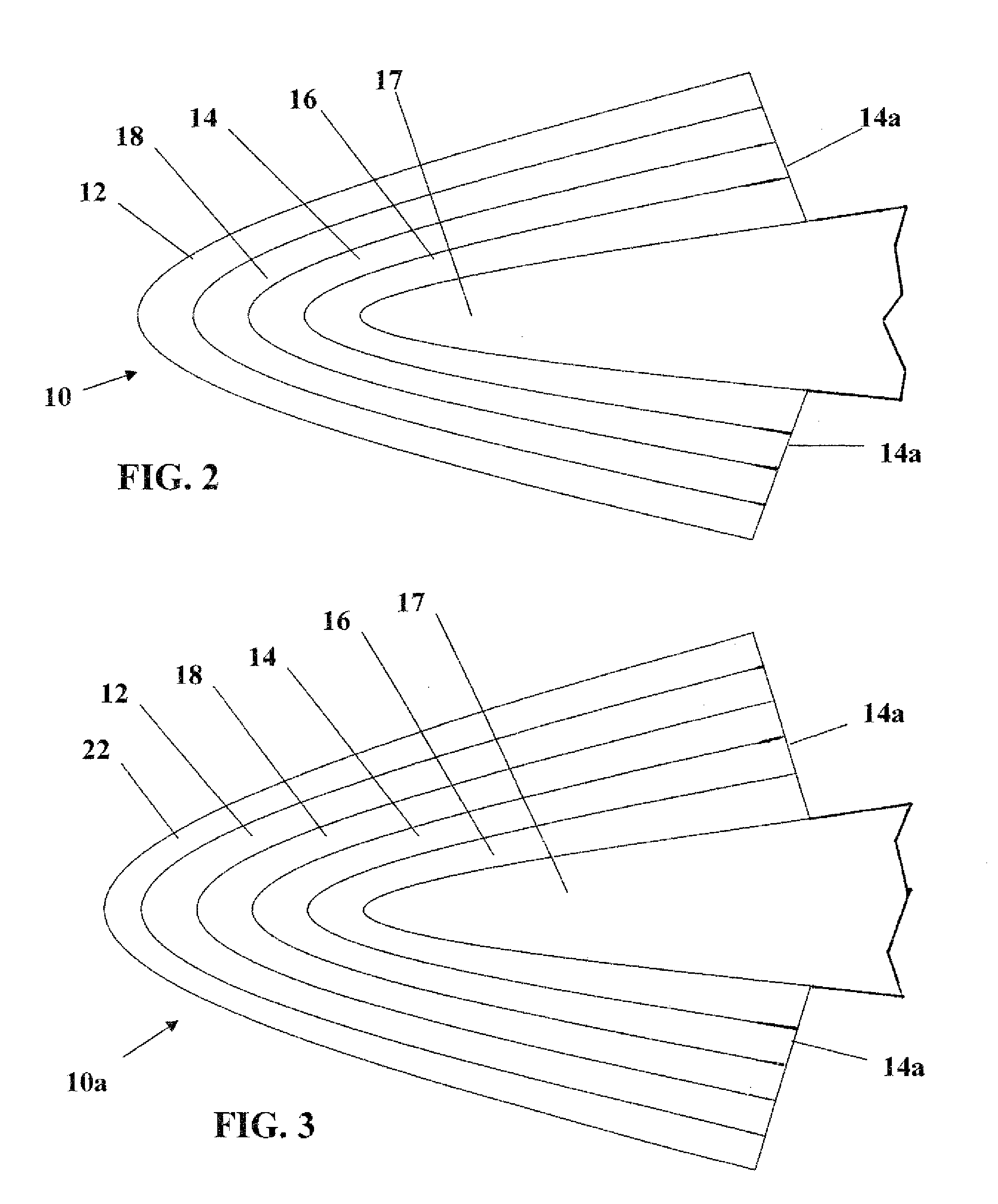Protector for a leading edge of an airfoil
a technology for protecting the leading edge of an airfoil and a helicopter, which is applied in the field of airfoils, can solve the problems of reducing the operational life of the rotor blade, negative affecting the rotor blade, and erosion of the leading edg
- Summary
- Abstract
- Description
- Claims
- Application Information
AI Technical Summary
Benefits of technology
Problems solved by technology
Method used
Image
Examples
Embodiment Construction
[0030]The present invention will now be described more fully hereinafter with reference to the accompanying drawings in which preferred embodiments of the invention are shown. This invention may, however, be embodied in many different forms and should not be considered as limited to the embodiments set forth herein. These exemplary embodiments are provided so that this disclosure will be both thorough and complete, and will fully convey the scope of the invention to those skilled in the art. Like reference characters identify corresponding or similar elements throughout the several figures.
[0031]The present invention is a protector for the leading edge of an airfoil, e.g. a helicopter rotor blade, to reduce the transfer of impact forces and enhance erosion resistance thereof. To appreciate the advantages of the present invention over conventional practices, a detailed review of a helicopter rotor blade applied with prior art leading edge protection is hereinafter presented.
[0032]Ref...
PUM
 Login to View More
Login to View More Abstract
Description
Claims
Application Information
 Login to View More
Login to View More - R&D
- Intellectual Property
- Life Sciences
- Materials
- Tech Scout
- Unparalleled Data Quality
- Higher Quality Content
- 60% Fewer Hallucinations
Browse by: Latest US Patents, China's latest patents, Technical Efficacy Thesaurus, Application Domain, Technology Topic, Popular Technical Reports.
© 2025 PatSnap. All rights reserved.Legal|Privacy policy|Modern Slavery Act Transparency Statement|Sitemap|About US| Contact US: help@patsnap.com



